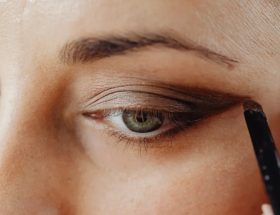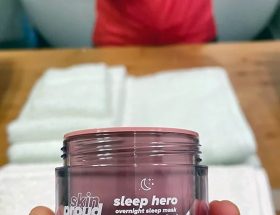Omega Fatty Acids in Skincare The Complete Guide
If you’re anything like us, when you hear “omega fatty acids” you probably immediately think of a fish oil supplement, not necessarily a skincare product. But omega fatty acids are one of those unique ingredients that straddle the line between both the health and beauty worlds, with benefits for your skin that can come both from ingesting them orally and applying them topically. Here, Robyn Gmyrek, MD, a board-certified dermatologist at Union Derm in New York City, and Dhaval Bhanusali, MD, a board-certified dermatologist in New York City, explain everything there is to know about omega fatty acids, including how what sets the different types apart, who should consider working them into a skincare routine, and the best products to try.
What Are Omega Fatty Acids?
At the risk of going full-on chemistry class here, it’s important to first start with a little bit of scientific info. “Omega fatty acids are unsaturated fatty acids that contain one or more double bonds between carbon atoms. If they have one double bond, they’re called monounsaturated fatty acids, or MUFAs. If they have more than one double bond, they’re called polyunsaturated fatty acids, or PUFAs,” explains Gmyrek. There are three main types; keep reading for more on what sets them apart.
DIY Clay Mask Recipes For Glowing Skin
Omega-3 Fatty Acids: The most common in this category are alpha-linolenic acid (ALA), eicosapentaenoic acid (EPA), and docosahexaenoic acid (DHA), says Gmyrek. They’re all important components of the membranes that surround each cell in your body, and have a variety of well-known health benefits, including everything from helping to manage cholesterol, reduce inflammation, and even help brain development and function.1
Omega-3 and -6 fatty acids are polyunsaturated whereas omega-9 is monounsaturated, but the biggest difference is that omega-3 and -6 are essential fatty acids, meaning they can’t be produced by the body, says Bhanusali. While all of the aforementioned nuances tend to apply more when it comes to overall health benefits and the ingestion of omega fatty acids orally, all three types tend to have very similar benefits for skin, and it becomes difficult to parse out differences among them (more on those benefits in a minute).
However, “omega-3 and omega-6 are the most studied for skincare benefits, though most data does come from nonclinical settings,” says Bhanusali.
Benefits of Omega Fatty Acids for Skin
“We learn a lot about what these essential fatty acids do for us when we look at people who have essential fatty acid deficiency, or EFAD, which significantly affects skin function,” explains Gmyrek. Patients with EFAD experience both increased transepidermal water loss and have a poor integrity of the skin barrier, but topical application of oils (with these fatty acids), helps improve both hydration and barrier function, she says.2
In other words, fatty acids help keep the outermost layer of our skin strong and healthy, and subsequently prevent moisture from escaping, while also helping to smooth the surface of the skin.3 (It’s for this reason that both dermatologists say they’re most beneficial for those dealing with dryness and/or issues related to a compromised skin barrier, more on that in a minute.) Bhanusali adds that topical fatty acids can also have anti-inflammatory and antibacterial properties, though again, points out that clinical data is limited.
While some companies are starting to add omega fatty acids into their formulations, straight up, the majority of the time, topical fatty acids are delivered via other ingredients, most often plant-based oils. While not all oils are created equal, some of the ones that are rich in omega fatty acids also tend to be comedogenic or pore-clogging, so those with acne-prone skin should proceed with caution when it comes to topical application, cautions Gmryek. (For example, olive oil is rich in oleic acid, an omega-9 fatty acid, but is comedogenic.) Bhanusali adds that some patients can also have an allergic or irritant reaction to some of these oils, citing rosehip oil (which contains omega-3’s and omega-6’s) as one example.
You can either look for a product that incorporates fatty acids directly, or seek out products that contain plant-based oils rich in omega fatty acids. Some of the most common include: safflower (omega-6), sunflower (omega-6 and -9), rosehip (omega-6 and -3), and blackcurrant seed oil (omega-6). You can use these oils in lieu of moisturizer, or, for extra moisture, on top of moisturizer.4










